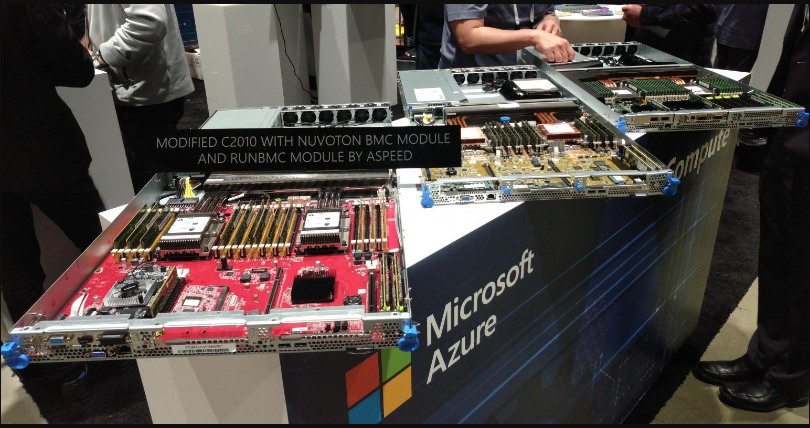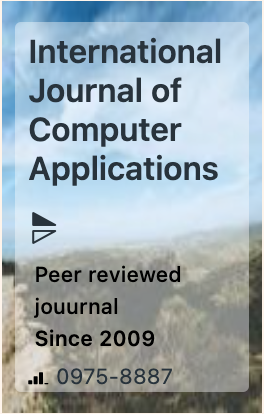The week's pick
Random Articles
Reseach Article
Notes on ”On the Design of a Privacy-preserving Communication Scheme for Cloud-based Digital twin Environments using Blockchain”
| International Journal of Computer Applications |
| Foundation of Computer Science (FCS), NY, USA |
| Volume 186 - Number 42 |
| Year of Publication: 2024 |
| Authors: Fauzia Hassan, Vinod Kumar, Anil Kumar Nishad, Adesh Kumari |
 10.5120/ijca2024924022
10.5120/ijca2024924022
|
Fauzia Hassan, Vinod Kumar, Anil Kumar Nishad, Adesh Kumari . Notes on ”On the Design of a Privacy-preserving Communication Scheme for Cloud-based Digital twin Environments using Blockchain”. International Journal of Computer Applications. 186, 42 ( Sep 2024), 1-6. DOI=10.5120/ijca2024924022
Abstract
The innovative paradigm of Digital Twin (DT) technology is transforming our understanding of DT and interactions with the physical environment. It entails building DTs, or virtual replicas, that precisely imitate the traits, actions, and features of actual systems, processes, or things. These dynamic DTs provide continuous, bidirectional communication between digital and physical domains while changing in real time. DT is a multi-physical, multi-scale, and multi-dimensional technology. At the same time, it is characterized by real-time synchronisation, realistic mapping, and high fidelity. It allows the physical world and the information world to see connection and integration between the physical and information worlds. In recent years, DT technology has attracted the attention of academic professionals, especially its applications. When it comes to the world of the internet, security and privacy are of major concern. In the proposed paper, we have reviewed a mutual authentication scheme proposed by Son et al.’s [1] and cryptanalysed the scheme in order to get an idea in which direction further work has to be done. We show that the proposed scheme fails to prevent insider attacks, stolen smart card attacks, known session-specific temporary information attacks, and lack of mutual authentication. Additionally, we propose several enhancements within the same framework.
References
- Seunghwan Son, Deokkyu Kwon, Joonyoung Lee, Sungjin Yu, Nam-Su Jho, and Youngho Park. On the design of a privacy-preserving communication scheme for cloud-based digital twin environments using blockchain. IEEE Access, 10:75365–75375, 2022.
- Fauzia Hassan, Vinod Kumar, Anil Kumar Nishad, and Vinay Gautam. Investigation of digital twin technology for secure and privacy preserving networking. Procedia Computer Science, 230:398–406, 2023.
- Diego M Bot´ın-Sanabria, Adriana-Simona Mihaita, Rodrigo E Peimbert-Garc´ıa, Mauricio A Ram´ırez-Moreno, Ricardo A Ram´ırez-Mendoza, and Jorge de J Lozoya-Santos. Digital twin technology challenges and applications: A comprehensive review. Remote Sensing, 14(6):1335, 2022.
- Fei Tao, Bin Xiao, Qinglin Qi, Jiangfeng Cheng, and Ping Ji. Digital twin modeling. Journal of Manufacturing Systems, 64:372–389, 2022.
- Mengnan Liu, Shuiliang Fang, Huiyue Dong, and Cunzhi Xu. Review of digital twin about concepts, technologies, and industrial applications. Journal of manufacturing systems, 58:346–361, 2021.
- Deuk-Young Jeong, Myung-Sun Baek, Tae-Beom Lim, Yong- Woon Kim, Se-Han Kim, Yong-Tae Lee, Woo-Sug Jung, and In-Bok Lee. Digital twin: technology evolution stages and implementation layers with technology elements. IEEE Access, 10:52609–52620, 2022.
- Qamar Irshad and Zaheer Abidi. Outpatient department in hospitals: A critical analysis. 2020.
- Peter Augustine. The industry use cases for the digital twin idea. In Advances in Computers, volume 117, pages 79–105. Elsevier, 2020.
- Michael Grieves and John Vickers. Digital twin: Mitigating unpredictable, undesirable emergent behavior in complex systems. Transdisciplinary perspectives on complex systems: New findings and approaches, pages 85–113, 2017.
- B Burke, M Walker, and D Cearley. Top 10 strategic technology tends for 2017. 14th October, 2016.
- Qinglin Qi, Fei Tao, Tianliang Hu, Nabil Anwer, Ang Liu, Yongli Wei, Lihui Wang, and AYC Nee. Enabling technologies and tools for digital twin. Journal of Manufacturing Systems, 58:3–21, 2021.
- Aidan Fuller, Zhong Fan, Charles Day, and Chris Barlow. Digital twin: Enabling technologies, challenges and open research. IEEE access, 8:108952–108971, 2020.
- Michael Grieves. Digital twin: Manufacturing excellence through virtual factory replication. white paper, 2014. Online:-03-01.
- Fei Tao, Jiangfeng Cheng, Qinglin Qi, Meng Zhang, He Zhang, and Fangyuan Sui. Digital twin-driven product design, manufacturing and service with big data. The International Journal of Advanced Manufacturing Technology, 94:3563–3576, 2018.
Index Terms
Keywords

